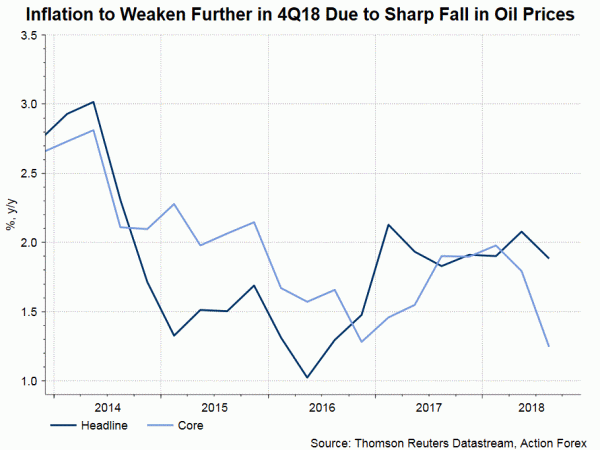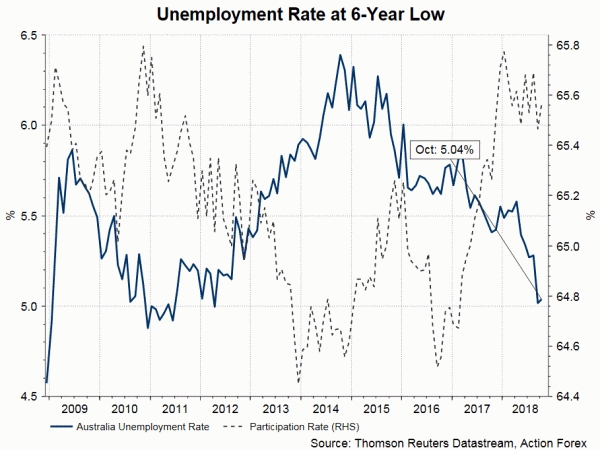As widely expected, RBA left the cash rate unchanged at 1.5% for the 26th consecutive meeting. The accompanying statement contained little new information. Yet, it revealed that the members were dovish about the housing market. Meanwhile, disinflation in Australian economy should likely lead the central bank to keep its monetary policy on hold for the whole of 2019, notwithstanding above- trend economic growth and further decline in unemployment rate.
Policymakers remained upbeat about economic developments, suggesting that the economy is expected to “continue to grow above trend” and “a further reduction in the unemployment rate is likely”. Globally, RBA acknowledged the “signs of a slowdown in global trade, partly stemming from ongoing trade tensions”.
On the housing market in Australia, RBA indicated that property prices in Sydney and Melbourne housing markets “continued to ease” while “credit conditions… are tighter” with “some lenders having a reduced appetite to lend”. It added that the demand for credit by investors in the housing market has “slowed noticeably” with growth in credit extended to owner-occupiers easing “to an annualized pace of 5–6%. The statement also acknowledged the low mortgage rates with strong competition for “borrowers of high credit quality”.
Inflation in Australia has been soft. Headline CPI in 3Q18 eased to +1.9% y/y, while core CPI weakened to +1.2%. Inflation probably weakened further in 4Q18, amidst the sharp fall in oil prices. Meanwhile, although the job market condition appears thriving with the unemployment rate staying at 6-year low of 5% in October, wage growth has been improving only gradually. Indeed, while RBA forecast that strong employment would result in “further lift in wages growth over time”, it believes that growth would be “gradual”. This should prolong the disinflationary situation in Australia and allowing the central bank to keep its powder dry for an extended period of time.














